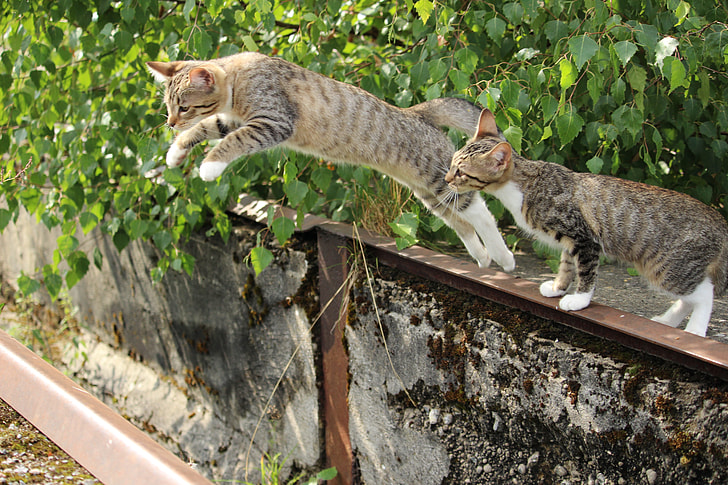What Do Cats Eat In The Wild? Domestic Cat In The Wild
What Do Cats Eat In The Wild?
What Do Cats Eat In The Wild? It does not take a doctorate in zoology to discover that there are two types of cat in the wild: the domesticated cat and the wildcat known for its lethality. We have learned a lot about what animals cats eat in nature and what these habits tell us about the diet of domesticated cats. Like domestic cats, mountain lions occasionally eat grass and other vegetable substances, but the food of a mountain lion consists almost exclusively of animal matter.
In comparison, most commercial cat food has a high carbohydrate content and there is no need to hunt or procure pet meal. Once home, they will eat prepared cat food, which most cats eat after catching prey. The puzzle is that although cats eat a range of foods, they are often considered very fine by their owners, who can be very careful about their feeding. They eat whatever there is, no matter how it tastes or whether they are bored or not.
Food a cat eats in the wild
This is logical, considering that the food a cat eats in the wild is a mixture of fresh, freshly killed prey and a variety of other foods such as grasses, berries and fruit.
Wildcats eat several small meals at a time as they eat, as their eyesight and hearing help them catch food. They eat and kill whatever they like, but they can also be hunted to eat if they want, whatever they prefer.
Although this is not the main reason for most people to keep a cat as companion nowadays, free-roaming domestic cats hunt and bring rodents into the house and hunt for rodents. Many cats, wild or wild, are most active at night, while cats that are at home or active are more active.
Imitate the diet of a wild cat
If you want to change the diet of your pet, it is a good start to imitate the diet of a wild cat. It will consist almost exclusively of raw meat, but there are high quality diets that you should try to emulate. Establishing and understanding the diet of feral cats can also be beneficial as pet owners. Look at what cats actually eat in the wild and look for a diet similar to that of the home or pet shop.
Wet cat food can have a nutrient profile that mimics the type of diet a cat would choose in the wild, such as raw meat, vegetables, fruits and nuts.
Although most domestic cats today happily and healthily eat food offered by their owners, most of whom do not live off food themselves, cat feeding behavior is a fascinating topic. In the wild cats regulate themselves by choosing to eat little or nothing, depending on their own preferences.
Prey for wild cats
Small rodents such as voles and mice, among many other species, make up the bulk of prey for wild cats in the wild. However, young rabbits and hares can make up a large proportion of prey, and nutritional studies have shown that small rodents such as squirrels, rats, mice and even birds are common. Rabbit is the main food for the feral cat in Victoria, but it's not the only one.
There are also farm cats kept on farms to keep rodents away, but they are domestic cats that live far from humans. Even if you own a well-fed, healthy and healthy domestic cat in the wild, the cat is still a predator. Owning a cat affects Florida's wildlife just like a feral cat and can cause serious health problems for humans and animals.
Domestic cats still have the ability
Even well-fed cats, when given the opportunity, will prey on local birds, small mammals and reptiles, and even the most gentle cat will hunt because, after centuries of domestication, cats still have the ability to search and catch other small animals. Domestic cats are highly motivated to hunt, which Wild animals are not only attractive to animals, but also to predators. Predators follow the prey, and prey follows the predators, even if they get a chance.
Animal experts who have long studied wild cats say that animals feed on a variety of different items depending on their geographical location. For example, country cats eat 14 different species of animals, while city cats eat only cat food and a single grasshopper. It was predicted that cats that eat only from their food bowl would have identical isotopic matches with food and that differences between cat and pet food would indicate that cats supplement their food with wild prey. The results suggested that non-feral cats were fed to humans, suggesting that there are local variations in cat prey, that they are feral and feral, or that humans do not pay attention to what they feed.
Even today, most domesticated cats are free agents that can survive in the wild, as the abundance of feral cats around the world shows. One might think of domestic cats and small wild cats, but there is no evidence that they could take a gazelle or a water buffalo if they wanted to, and they can't.
